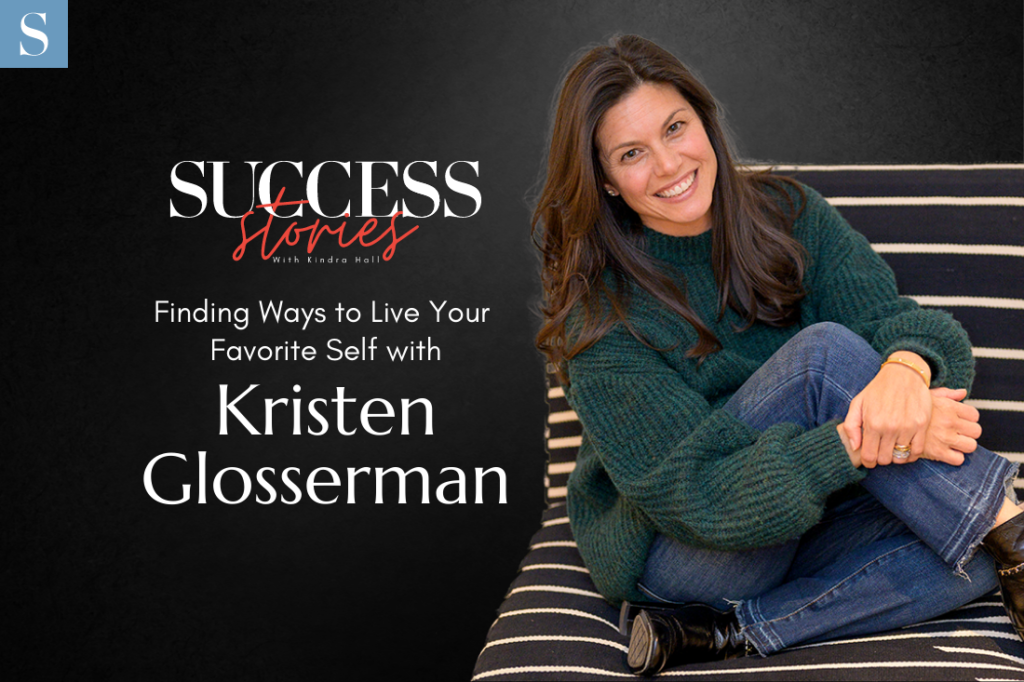Becoming the best version of yourself sounds like a noble goal—but how do you actually work toward it?
Kristen Glosserman left her previous marriage because it wasn’t fulfilling her anymore. She gave up an executive career to become a life coach. She now helps CEOs and other professionals better enjoy their work and lives through practices that lead them in a positive direction.
Find out more about Kristen’s approach in her book If It’s Not Right, Go Left: Practical and Inspirational Lessons to Move You in a Positive Direction. If you live in New York, you can also visit her and her husband’s restaurant, Hill Country Barbecue Market.
Kristen defines the best version of yourself as “This self within all of us that we want to be. It’s the combination of all of our goals and purposes. My husband says it’s the recipe between work, home and life. We are our best version of ourselves when we can feel that sense of light and purpose.”
In this episode of SUCCESS Stories, Kristen tells Chief Storytelling Officer Kindra Hall why the path to happiness is built on good decisions, how to know whether a problem is worth your attention and why staying in your lane keeps you on track to happiness.
Focus your energy.
Nothing can make you question your achievements and goals like looking too hard at what other people are doing. Reading about someone else’s promotion on LinkedIn or scrolling through photos of their new house on Instagram is a shortcut to the “grass is always greener” comparison trap mentality that also leaves you green with envy.
That’s why Kristen recommends learning to “stay in your lane.” By that, she means understanding what you want and what you’ve accomplished, and not getting distracted thinking about what other people are doing.
That’s not the same as saying you should limit yourself. Your lane can be wide. For example, although Kristen typically leaves the operations side of the restaurant to her husband and the staff, she also loves food, and includes recipes in her book. “Could a chef tell me to stay in my lane? My lane includes food,” she says.
Apply this same level of focus to your long-term goals. Instead of making decisions based on what you think you should be doing, put together a clear vision of what you want from life.
“What is the picture you see for yourself, your family, your business and your life?” Kristen says. Once you can see that big picture, you can start making steps towards it, knowing that you’re working to achieve a goal you value, not what other people have decided on for you.
Approach problems strategically.
You’re stuck in traffic and the time before your meeting is ticking down. The exercise class that fits in perfectly with your schedule is full. The milk you just picked up at the store spilled in the car, soaking everything.
These are all frustrating situations over which we have no control. But they only become problems if we decide that’s what they are.
When you feel yourself getting exasperated over something that’s happened, stop and ask yourself whether it deserves the significance you’re granting it. Spilled milk doesn’t merit the same amount of attention and emotion as, say, a medical emergency. The latter is a problem, and it needs to be addressed. The former is something you can deal with without letting it impact your day.
In that example, it’s pretty easy to see the difference between an objective problem and something that doesn’t have to rise to that level. But life isn’t always that clear-cut.
If you’re wrestling with a situation you don’t know how to handle—to the point that it’s taking up a lot of your brain space—simplify it to its most basic essence. You might realize that it’s less complicated than you realized: More of a milk-spilling irritation than a full-scale problem. Or you might get a better understanding of the root of the issue and how you can address it.
Build mental muscle.
Becoming your best self and finding happiness isn’t a one-off process. You have to build a practice over time that eventually adds up to feeling content in all aspects of your life.
Treat it like a muscle or a skill: Just like you don’t run for five minutes to prepare for a marathon, or cook one omelet and become a chef—you have to commit to self-improving efforts every day.
A lot of that practice comes down to making decisions that lead you in a positive direction. Those decisions won’t always be the same.
For example, say you go to an event in your industry where you make a lot of great connections. You’re invited to an after party. If you go, you could potentially continue meeting more people and networking. If you don’t go, you’ll feel more refreshed for all the tasks you have to do tomorrow.
Neither decision is always right or always wrong. It depends on the situation—whether you have a busy morning planned, for example—and what will be best for you in the long term.
That said, don’t think that a lack of instant benefits means a long and tedious slog. The thing about happiness—and self-improvement—is that the journey to get to it is as meaningful as the goal you’re aiming for.
“Happiness isn’t one moment,” Kristen says. “It’s the process and the journey…. It took many years of creating a process and a discipline around positive direction that got me here. It’s the many good decisions that led to the happy, fulfilled and exuberant person that I am today.”
SUCCESS Stories with Madison Pieper is no longer releasing new episodes on the SUCCESS Podcast Network, but you can still listen to the full conversation below.











